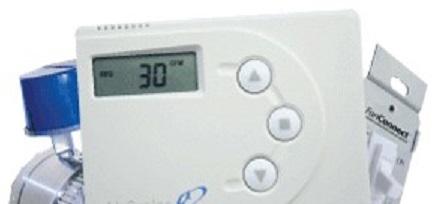
Balanced Supply plus Exhaust
Installed correctly, a whole-house fresh air system helps ensure a healthier indoor environment.
Balanced Supply plus Exhaust Background

Contaminants in homes can trigger asthma and allergy attacks as well as other health problems. Whole-house fresh air systems effectively dilute these contaminants. Balanced systems provide effective ventilation by bringing fresh air into the home through dedicated fresh air ducts equipped with filters rather than through unknown sources like cracks in the building envelope. This intake air is balanced with electronically controlled exhaust fans to maintain even air pressures throughout the home. Electronic controls are used to operate the air handler fan of the central heating and cooling system to periodically draw a set amount of fresh air into the home throughout the day, even when the thermostat is not calling for heating and cooling.
Tips to Sell Quality Installed Home Improvements
Home Improvement Expert is a valuable tool for organizations committed to quality installed work. The following tips help optimize the value of this tool when selling home improvements:
Trust Matters: Inform homeowners how your work conforms to this world-class expert guidance. Recommend they visit the DOE website as evidence these are indeed official best practices.
Knowledge Matters: Take advantage of the Building America Solution Center as a resource for becoming an expert on these projects.
Clarity Matters: Tell prospective clients to contrast your expert-recommended best practices with other contractors.
Value Matters: Advise prospective clients to insist other bids also include these checklists to ensure equivalent quality work.
Message Matters: Showcase on your website and marketing materials that your company uses the highest quality best practices specified on HIE Checklists.
Experiences Matter: Provide visual evidence contrasting the difference between poor and high quality work such as infrared images; pre- and post-energy bills; short and long warranties; and simple charts and graphics depicting performance advantages.